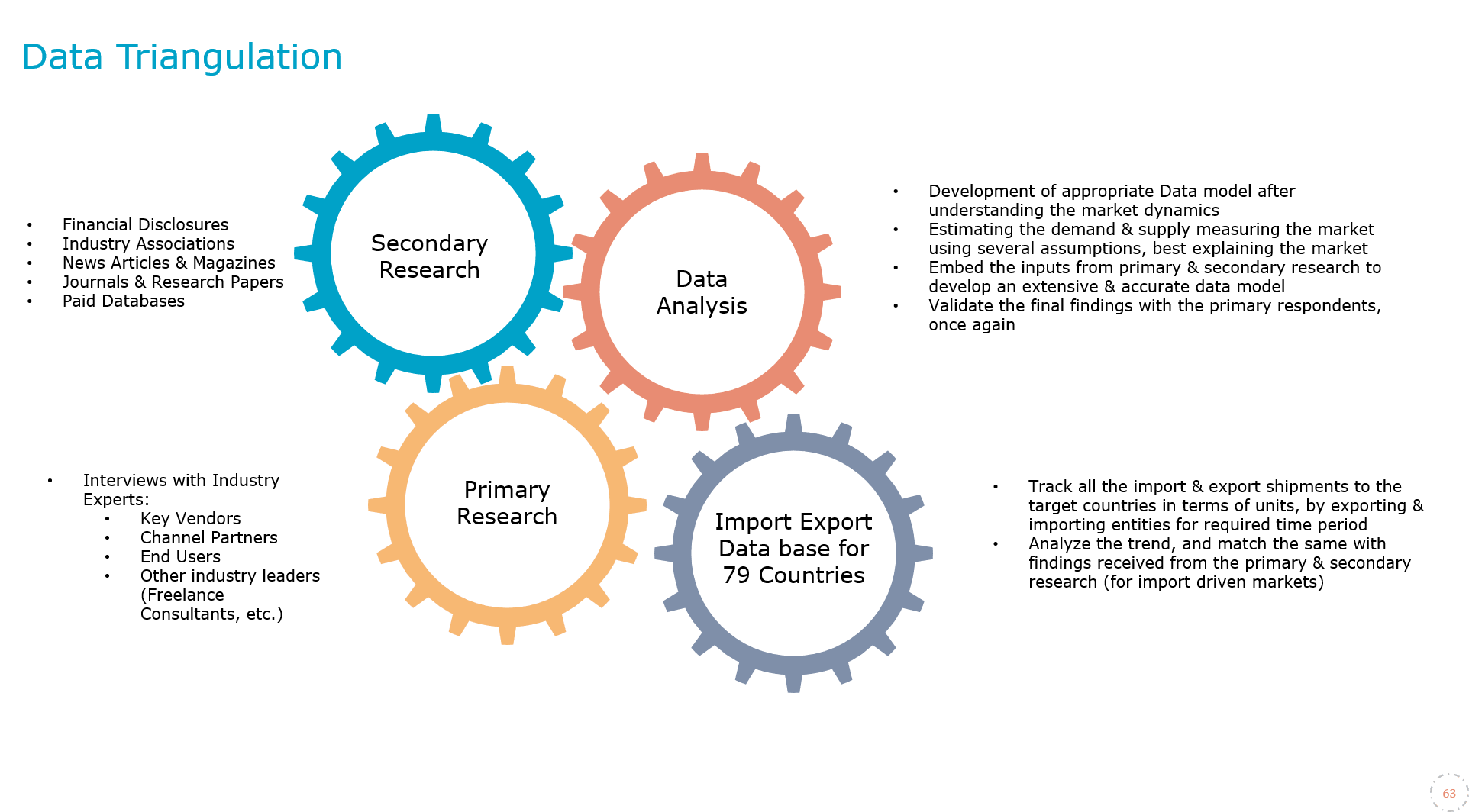
Global Edge Computing Market Research Report: Forecast (2025-2030)
Edge Computing Market - By Component (Solution [Hardware {Sensors/Routers, Edge Nodes/Gateways}, Software, Platforms], Services), By Application (Connected Vehicles, Smart Devices,... Remote Monitoring, Industrial Internet of Things, Augmented & Virtual Reality, Smart Cities, Content Delivery, Others), By Organisation Size (Small, Medium, Large), By End-User (Energy & Utilities, Healthcare & Lifesciences, Transportation & Logistics, Manufacturing, Retail & Consumer Goods, IT & Telecom, Government & Defense, Others), and Others Read more
- ICT & Electronics
- Feb 2024
- Pages 189
- Report Format: PDF, Excel, PPT
Market Definition
Processing and analyzing data close to the point of generation, as opposed to depending exclusively on centralized data centers, is known as edge computing. By bringing processing power closer to the point of data production, this decentralized method lowers latency and bandwidth consumption while improving real-time processing capabilities. edge computing world allows for quicker decision-making, quicker response times for important applications, and less strain on centralized infrastructure by shifting computing power to the "edge" of the network.
Market Insights & Analysis: Global Edge Computing Market (2025-30):
The Global Edge Computing Market size was valued at USD 62.19 Billion in 2024 and is projected to reach USD 104 Billion by 2030. Along with this, the market is estimated to grow at a CAGR of around 10.90% during the forecast period, i.e., 2025-30. The market ascension is attributable to surging government investment in smart city projects, the rising adoption of smart devices and connected vehicles by consumers, and the rollout of super-fast networking technologies, such as 5G wireless technology. Besides these, the increasing influx of funding by the edge computing companies to launch products such as home security cameras that use edge computing, cloud gaming consoles, and autonomous vehicles has further expanded the edge industry in recent years.
| Report Coverage | Details |
|---|---|
| Historical Years | 2020-23 |
|
Base Years
|
2024
|
|
Forecast Years
|
2025-30
|
| Market Value in 2024 | USD 62.19 Billion |
| Market Value in 2030 | USD 104 Billion |
| CAGR (2025-30) | 10.90% |
| Leading Region | North America |
| Top Key Players | IBM Corporation, Amazon Web Services, Cisco Systems, Inc., Huawei Technologies Co. Limited, ABB Group, Intel Corporation, Microsoft Corporation, SAP SE, Hewlett Packard Enterprise Development LP, AT&T Inc., Rockwell Automation Inc., Atos SE, Digi International Inc., General Electric Company, ADLINK Technology Inc |
| Key Report Highlights |
|
*Boost strategic growth with in-depth market analysis - Get a free sample preview today!
Unquestionably, one of the main factors driving the growth of the edge computing market is the development of 5G networks. The fifth generation of cellular networks, or 5G, is transforming connections with previously unheard-of levels of speed, dependability, and latency. The potential of 5G networks to revolutionize numerous industries is intimately linked to the concepts of edge computing, resulting in mutually beneficial developments.
Moreover, cities rely on networked Internet of Things (IoT) sensors and devices to gather and process data from multiple sources as they adopt digital transformation programs to enhance productivity, sustainability, and quality of life. This networked ecosystem relies on 5G networks to facilitate low-latency communication and high-speed data delivery. Cities can handle and analyze massive volumes of data locally, enabling effective resource allocation and real-time decision-making by putting edge computing equipment at strategic spots inside the urban environment, further augmenting the size & volume of the edge computing industry.

Additionally, the global edge computing industry is presented with several substantial opportunities from the convergence of edge computing and cloud services. Through the incorporation of edge computing capabilities into cloud services, enterprises may capitalize on the advantages of both frameworks to establish a more resilient and effective infrastructure. Real-time data processing and low-latency applications are met by edge computing, while scalability, flexibility, and centralized management are offered by cloud services. With this combination, companies can implement hybrid architectures that balance resource utilization, optimize workload distribution, and improve overall performance. Thus, the convergence of edge computing and cloud services is anticipated to offer a good scope for the growth & expansion of the Edge Computing Market during the forecast period.
Global Edge Computing Market Driver:
Growth of 5G Networks Augmenting Edge Computing Industry – Compared to earlier generations of mobile networks, 5G networks offer significantly faster data transfer rates, reduced latency, and improved network dependability. This makes data transfer between edge devices and centralized data centers more effective and seamless. The demand for edge computing solutions to handle and analyze the massive amounts of data created by IoT devices, smart sensors, and other connected devices at the edge of the network is rising as 5G becomes more widely used.
By processing data locally and eliminating the need to transport massive amounts of data back and forth to centralized servers, edge computing helps to relieve network congestion. Consequently, the infrastructure required to cloudedge support cutting-edge technologies like augmented reality, driverless cars, and smart cities is made possible by the combination of 5G and edge computing, fueling the revenue growth of the Edge Computing Market.
Global Edge Computing Market Opportunity:
The Convergence of Edge Computing with Cloud Services to Offer Lucrative Opportunities – There is significant potential for the Edge Computing Market due to the convergence of edge computing with cloud services. Delivering services more quickly and efficiently is made possible by edge computing, which processes data closer to the point of generation. It ensures low-latency data processing at the edge by utilizing the cloud's scalability, storage, and computing capacity when combined with other cloud services. Because of this convergence, companies can effectively manage their workloads, data, and apps across distributed environments.
Furthermore, it supports emerging technologies like IoT and AI and improves security by limiting data transit to centralized servers. It also makes real-time analytics easier. The edge industry is expected to expand significantly as more companies embrace hybrid cloud-edge architectures to fulfill the demands of contemporary digital infrastructure. These designs provide enterprises in a variety of industries with improved capabilities, cost-effectiveness, and flexibility.
Global Edge Computing Market Challenge:
Integration with the Current Cloud Infrastructure Posing a Challenge – One major obstacle facing the edge computing industry is integration with the existing cloud infrastructure. By bringing computational power closer to the data source, edge computing seeks to decentralize data processing and minimize latency; nevertheless, it also necessitates a smooth interaction with current cloud services and infrastructure.
Creating hybrid cloud-edge architectures that provide effective data management, orchestration, and migration across dispersed environments is necessary to achieve this integration. Delivering coherent and scalable solutions requires interoperability, compatibility, and consistent performance between edge and cloud components. When integrating edge and cloud settings, enterprises also need to handle issues such as, data synchronization, security, and governance. Reaching the full potential of edge computing and the utilization of cloud services' scalability, flexibility, and centralized management will depend on overcoming these integration obstacles.
Global Edge Computing Market Trend:
Integration of Artificial Intelligence (AI) & Machine Learning (ML) Capabilities Gaining Momentum – In the edge computing industry, the integration of machine learning (ML) and artificial intelligence (AI) capabilities at the edge is an emerging trend. Organizations can process and analyze data in real time, extract insightful information, make wise judgments, and act quickly at the moment of data generation by implementing AI and ML algorithms directly on edge devices. Applications like industrial edge marketplace automation, smart cities, autonomous cars, and IoT-enabled devices that demand low latency, quick response times, and effective bandwidth use would benefit most from this integration. Organizations can also boost predictive maintenance capabilities, optimize resource allocation, improve operational efficiency, and provide end users with personalized experiences by utilizing AI and ML at the edge.
Therefore, the integration of AI & ML capabilities is changing the dynamics of the global edge industry and paving the way for future growth & expansion in the coming years.
Global Edge Computing Market (2025-30): Segmentation Analysis
The Global Edge Computing Market study of MarkNtel Advisors evaluates & highlights the major trends and influencing factors in each segment. It includes predictions for the period 2025–2030 at the global level. According to the analysis, the market has been further classified as:
Based on Component:
- Solution
- Hardware
- Sensors / Routers
- Edge Nodes / Gateways
- Software
- Platforms
- Hardware
- Services
The solution segment holds a major share of the Global Edge Computing Market because of its extensive offerings that cater to the different needs of different sectors. The term "edge computing solutions" refers to a broad category of products and services that include software platforms for data management, analytics, and security in addition to hardware parts like edge servers, gateways, and sensors. These products are made to help businesses efficiently install, maintain, and enhance their edge computing infrastructure.
In addition, solution providers help companies deploy edge computing solutions that are customized to meet their unique needs by providing integration, maintenance, and consulting services. By providing end-to-end solutions that address the difficulties of deploying and managing edge computing environments, solution providers are playing a critical role in accelerating the adoption of edge computing, which is becoming more and more in demand across industries like manufacturing, healthcare, retail, and telecommunications.
Based on Organization Size:
- Small
- Medium
- Large
The Global Edge Computing Market is expected to be led by large enterprises mainly because of their extensive infrastructure, varied operating needs, and huge resources. These businesses have the resources and know-how to invest in and implement edge computing solutions on a large scale. Furthermore, because large businesses frequently have complex networks of dispersed assets and operate across various geographic locations, edge computing is an appealing option for streamlining operations and is market edge worth it productivity.
Moreover, large enterprises usually have a wide variety of data sources spread across their operations, from machinery and vehicles to IoT devices and sensors. By processing and analyzing data closer to the source, edge computing helps these firms make decisions more quickly, gain deeper insights, and clear up network congestion. Large businesses may improve their competitiveness, reactivity, and agility in dynamic market settings by utilizing edge computing.
Large enterprises are therefore well-positioned to dominate the edge computing industry due to their strong financial position, advanced technological skills, industry expertise, and capacity to meet a variety of operational needs. Large businesses will be crucial in determining how edge computing is adopted and promoting value creation in the digital economy as it develops and matures.
Global Edge Computing Market (2025-30): Regional Projections
Geographically, the Global Edge Computing Market expands across:
- North America
- South America
- Europe
- Asia-Pacific
- The Middle East and Africa
North America is dominating the Global Edge Computing Market. North America's strong technology infrastructure is one of the main factors contributing to its supremacy in this industry. The region has a highly qualified workforce, large cloud computing facilities, and cutting-edge telecommunications networks, all of which are critical for the development and deployment of edge computing solutions. Numerous businesses at the vanguard of edge computing innovation are based in major tech hubs like Silicon Valley in California and the Seattle metropolitan region. These businesses include both well-established tech giants and edge computing startups.
North America's early adoption of emerging technologies is another factor contributing to the region's supremacy in the edge computing industry. Businesses are using edge computing more and more to improve decision-making, increase productivity, and provide customers with new services across a variety of industries, from manufacturing and healthcare to logistics and transportation. Edge computing, for instance, helps producers optimize manufacturing processes by analyzing sensor data in real-time. Healthcare professionals, on the other hand, use edge devices to remotely monitor patients and give personalized treatment. Therefore, despite growing competition from other regions, especially Asia-Pacific, North America is expected to dominate the global market for edge computing over the forecast period.
Global Edge Computing Industry Recent Development:
- In February 2023: Cisco Systems Inc. introduced Cisco Edge Intelligence, a technology that enhances data governance and management and extracts smart insights from networked assets to boost an organization's competitiveness.
- In January 2022: Amazon Web Services partnered with Telenor to provide edge and 5G services, mainly targeted at enterprise verticals like manufacturing, supply chain, logistics, and automotive.
Gain a Competitive Edge with Our Global Edge Computing Market Report
- Global Edge Computing Market Report by MarkNtel Advisors provides a detailed & thorough analysis of market size & market share, growth rate, competitive landscape, and key players. This comprehensive analysis helps businesses gain a holistic understanding of market dynamics & make informed decisions.
- This report also highlights current market trends & future projections, allowing businesses to identify emerging opportunities & potential challenges. By understanding market forecasts, companies can align their strategies & stay ahead of the competition.
- Global Edge Computing Market Report aids in assessing & mitigating risks associated with entering or operating in the market. By understanding market dynamics, regulatory frameworks, and potential challenges, businesses can develop strategies to minimize risks & optimize their operations.
*Reports Delivery Format - Market research studies from MarkNtel Advisors are offered in PDF, Excel and PowerPoint formats. Within 24 hours of the payment being successfully received, the report will be sent to your email address.
Frequently Asked Questions
- Introduction
- Product Definition
- Research Process
- Assumptions
- Market Segmentation
- Preface
- Executive Summary
- Global Edge Computing Market Case Studies
- Energy & Utilities
- Healthcare & Lifesciences
- Transportation & Logistics
- Manufacturing
- Retail & Consumer Goods
- IT & Telecom
- Others
- Edge Computing Landscape
- Impact of COVID-19 on Global Edge Computing Market
- Global Edge Computing Market Outlook, 2020-2030F
- Market Size & Analysis
- Revenues (in USD Million)
- Market Share & Analysis
- By Component
- Solution
- Hardware
- Sensors/Routers
- Edge Nodes/Gateways
- Software
- Platforms
- Hardware
- Services
- Solution
- By Application
- Connected Vehicles
- Smart Devices
- Remote Monitoring
- Industrial Internet of Things
- Augmented & Virtual Reality
- Smart Cities
- Content Delivery
- Others
- By End Users
- Energy & Utilities
- Healthcare & Lifesciences
- Transportation & Logistics
- Manufacturing
- Retail & Consumer Goods
- IT & Telecom
- Government & Defense
- Others
- By Organization Size
- Small
- Medium
- Large
- By Region
- North America
- South America
- Europe
- Middle East & Africa
- Asia-Pacific
- By Competitors
- Competition Characteristics
- Market Share & Analysis
- Competitive Metrix
- By Component
- Market Size & Analysis
- North America Edge Computing Market Outlook, 2020-2030F
- Market Size & Analysis
- Revenues (in USD Million)
- Market Share & Analysis
- By Component
- By Application
- By End Users
- By Organization Size
- By Country
- The US Edge Computing Market Outlook, 2020-2030F
- Market Size & Analysis
- Revenues (in USD Million)
- Market Share & Analysis
- By Component
- By Application
- By End Users
- By Organization Size
- Market Size & Analysis
- Canada Edge Computing Market Outlook, 2020-2030F
- Market Size & Analysis
- Revenues (in USD Million)
- Market Share & Analysis
- By Component
- By Application
- By End Users
- By Organization Size
- Market Size & Analysis
- Mexico Edge Computing Market Outlook, 2020-2030F
- Market Size & Analysis
- Revenues (in USD Million)
- Market Share & Analysis
- By Component
- By Application
- By End Users
- By Organization Size
- Market Size & Analysis
- The US Edge Computing Market Outlook, 2020-2030F
- Market Size & Analysis
- South America Edge Computing Market Outlook, 2020-2030F
- Market Size & Analysis
- Revenues (in USD Million)
- Market Share & Analysis
- By Component
- By Application
- By End Users
- By Organization Size
- By Country
- Brazil Edge Computing Market Outlook, 2020-2030F
- Market Size & Analysis
- Revenues (in USD Million)
- Market Share & Analysis
- By Component
- By Application
- By End Users
- By Organization Size
- Market Size & Analysis
- Brazil Edge Computing Market Outlook, 2020-2030F
- Market Size & Analysis
- Europe Edge Computing Market Outlook, 2020-2030F
- Market Size & Analysis
- Revenues (in USD Million)
- Market Share & Analysis
- By Component
- By Application
- By End Users
- By Organization Size
- By Country
- Germany Edge Computing Market Outlook, 2020-2030F
- Market Size & Analysis
- Revenues (in USD Million)
- Market Share & Analysis
- By Component
- By Application
- By End Users
- By Organization Size
- Market Size & Analysis
- The UK Edge Computing Market Outlook, 2020-2030F
- Market Size & Analysis
- Revenues (in USD Million)
- Market Share & Analysis
- By Component
- By Application
- By End Users
- By Organization Size
- Market Size & Analysis
- France Edge Computing Market Outlook, 2020-2030F
- Market Size & Analysis
- Revenues (in USD Million)
- Market Share & Analysis
- By Component
- By Application
- By End Users
- By Organization Size
- Market Size & Analysis
- Germany Edge Computing Market Outlook, 2020-2030F
- Market Size & Analysis
- Middle East & Africa Edge Computing Market Outlook, 2020-2030F
- Market Size & Analysis
- Revenues (in USD Million)
- Market Share & Analysis
- By Component
- By Application
- By End Users
- By Organization Size
- By Country
- UAE Edge Computing Market Outlook, 2020-2030F
- Market Size & Analysis
- Revenues (in USD Million)
- Market Share & Analysis
- By Component
- By Application
- By End Users
- By Organization Size
- Market Size & Analysis
- Saudi Arabia Edge Computing Market Outlook, 2020-2030F
- Market Size & Analysis
- Revenues (in USD Million)
- Market Share & Analysis
- By Component
- By Application
- By End Users
- By Organization Size
- Market Size & Analysis
- South Africa Edge Computing Market Outlook, 2020-2030F
- Market Size & Analysis
- Revenues (in USD Million)
- Market Share & Analysis
- By Component
- By Application
- By End Users
- By Organization Size
- Market Size & Analysis
- UAE Edge Computing Market Outlook, 2020-2030F
- Market Size & Analysis
- Asia-Pacific Edge Computing Market Outlook, 2020-2030F
- Market Size & Analysis
- Revenues (in USD Million)
- Market Share & Analysis
- By Component
- By Application
- By End Users
- By Organization Size
- By Country
- China Edge Computing Market Outlook, 2020-2030F
- Market Size & Analysis
- Revenues (in USD Million)
- Market Share & Analysis
- By Component
- By Application
- By End Users
- By Organization Size
- Market Size & Analysis
- India Edge Computing Market Outlook, 2020-2030F
- Market Size & Analysis
- Revenues (in USD Million)
- Market Share & Analysis
- By Component
- By Application
- By End Users
- By Organization Size
- Market Size & Analysis
- Japan Edge Computing Market Outlook, 2020-2030F
- Market Size & Analysis
- Revenues (in USD Million)
- Market Share & Analysis
- By Component
- By Application
- By End Users
- By Organization Size
- Market Size & Analysis
- Australia Edge Computing Market Outlook, 2020-2030F
- Market Size & Analysis
- Revenues (in USD Million)
- Market Share & Analysis
- By Component
- By Application
- By End Users
- By Organization Size
- Market Size & Analysis
- China Edge Computing Market Outlook, 2020-2030F
- Market Size & Analysis
- Global Edge Computing Market Regulations, Policies, Product Benchmarks
- Global Edge Computing Market Trends & Insights
- Global Edge Computing Market: Value Chain Analysis
- Global Edge Computing Market Dynamics
- Drivers
- Challenges
- Global Edge Computing Market Hotspot & Opportunities
- Global Edge Computing Market, Competition Outlook
- Competition Matrix
- Target Markets
- Target Applications
- Research & Development
- Collaborations & Strategic Alliances
- Key Business Expansion Initiatives
- Business Restructuring- Mergers, Acquisitions, JVs
- Strategic Initiatives
- Company Profiles (Business Description, Product Offering, Strategic Alliances or Partnerships, etc.)
- IBM Corporation
- Amazon Web Services
- Cisco Systems, Inc.
- Huawei Technologies Co. Limited
- ABB Group
- Intel Corporation
- Microsoft Corporation
- SAP SE
- Hewlett Packard Enterprise Development LP
- AT&T Inc.
- Rockwell Automation Inc.
- Atos SE
- Digi International Inc.
- General Electric Company
- ADLINK Technology Inc.
- Competition Matrix
- Disclaimer
MarkNtel Advisors follows a robust and iterative research methodology designed to ensure maximum accuracy and minimize deviation in market estimates and forecasts. Our approach combines both bottom-up and top-down techniques to effectively segment and quantify various aspects of the market. A consistent feature across all our research reports is data triangulation, which examines the market from three distinct perspectives to validate findings. Key components of our research process include:
1. Scope & Research Design At the outset, MarkNtel Advisors define the research objectives and formulate pertinent questions. This phase involves determining the type of research—qualitative or quantitative—and designing a methodology that outlines data collection methods, target demographics, and analytical tools. They also establish timelines and budgets to ensure the research aligns with client goals.
2. Sample Selection and Data Collection In this stage, the firm identifies the target audience and determines the appropriate sample size to ensure representativeness. They employ various sampling methods, such as random or stratified sampling, based on the research objectives. Data collection is carried out using tools like surveys, interviews, and observations, ensuring the gathered data is reliable and relevant.
3. Data Analysis and Validation Once data is collected, MarkNtel Advisors undertake a rigorous analysis process. This includes cleaning the data to remove inconsistencies, employing statistical software for quantitative analysis, and thematic analysis for qualitative data. Validation steps are taken to ensure the accuracy and reliability of the findings, minimizing biases and errors.

4. Data Forecast and FinalizationThe final phase involves forecasting future market trends based on the analyzed data. MarkNtel Advisors utilize predictive modeling and time series analysis to anticipate market behaviors. The insights are then compiled into comprehensive reports, featuring visual aids like charts and graphs, and include strategic recommendations to inform client decision-making









